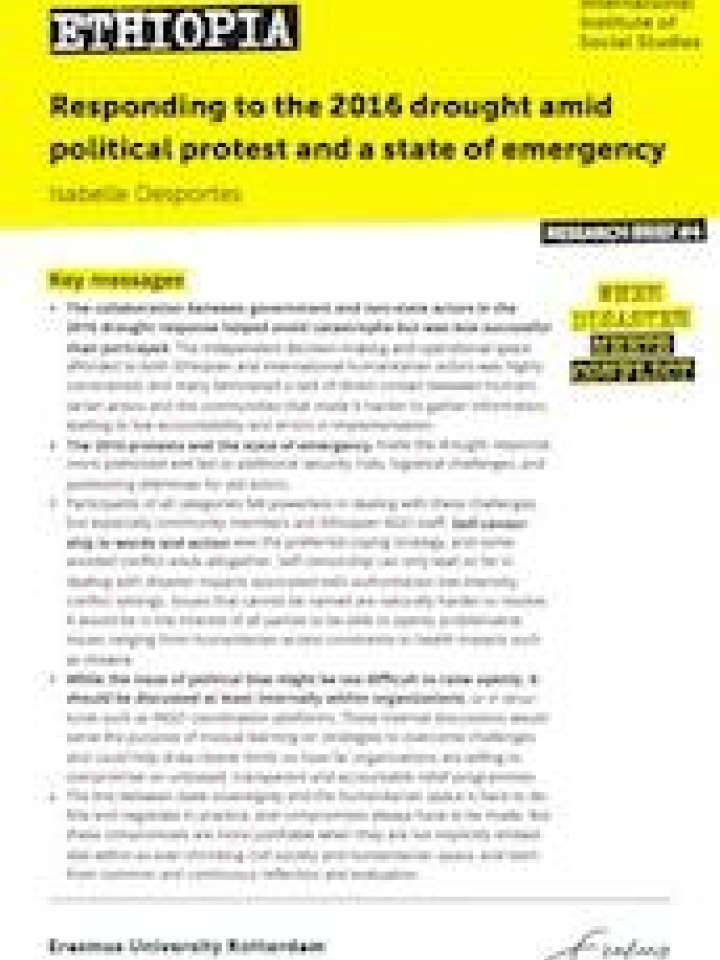Ethiopia: Responding to the 2016 drought amid political protest and a state of emergency
2016 was a year of both hydro-meteorological and socio-political stress for Ethiopia. A 50-year drought event triggered by the El Nino climatic phenomenon left 10.2 million people in need of humanitarian assistance. Coincidentally, the largest protests under the present political regime unfolded, followed by the declaration of a state of emergency in October 2016.
This brief is part of a research programme that analyses how state, non-state and humanitarian actors respond to disasters in different conflict-affected situations. The brief seeks to address the following questions:
- How is decision-making and implementation of the drought response shaped among state, societal and international humanitarian actors?
- How did the 2016 protests and state of emergency impact the drought response?
- How did Ethiopian and international aid agencies strategize around those impacts?
- What does this mean for the governance of disaster response in low-intensity conflict settings?
The case study concludes that the collaboration between government and non-state actors in the 2016 drought response was less successful than portrayed. Moreover, the 2016 protests and the state of emergency made the drought response more political and led to additional political challenges and positioning difficulties for humanitarian actors. Participants of all categories felt powerless in dealing with these challenges, but especially community members and Ethiopian NGO staff. Self-censorship in words and action was the preferred coping strategy.
Explore further
